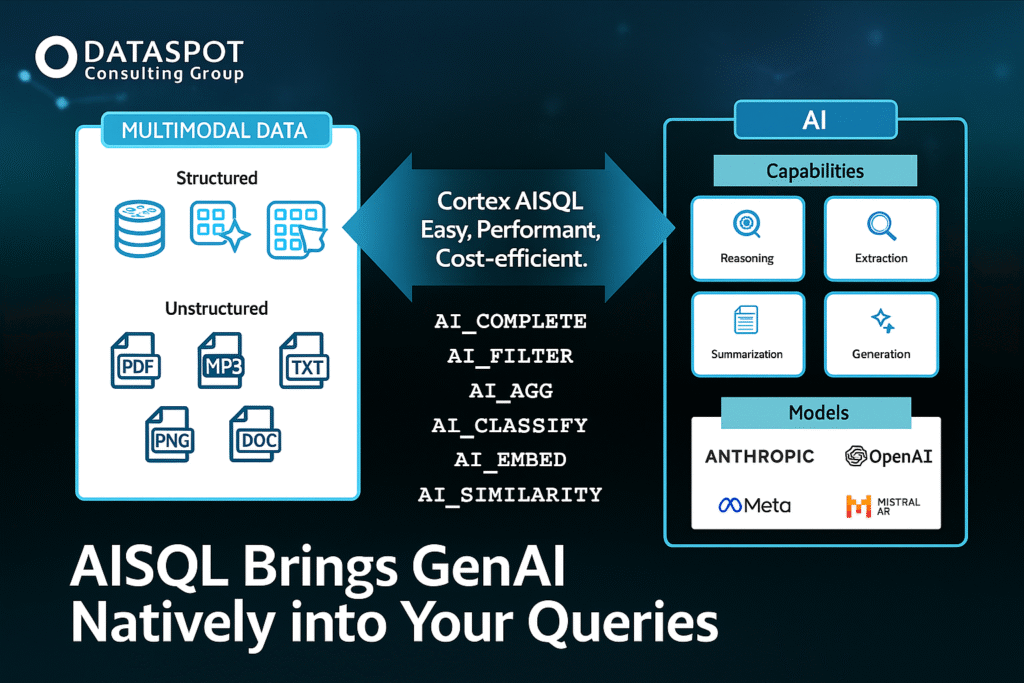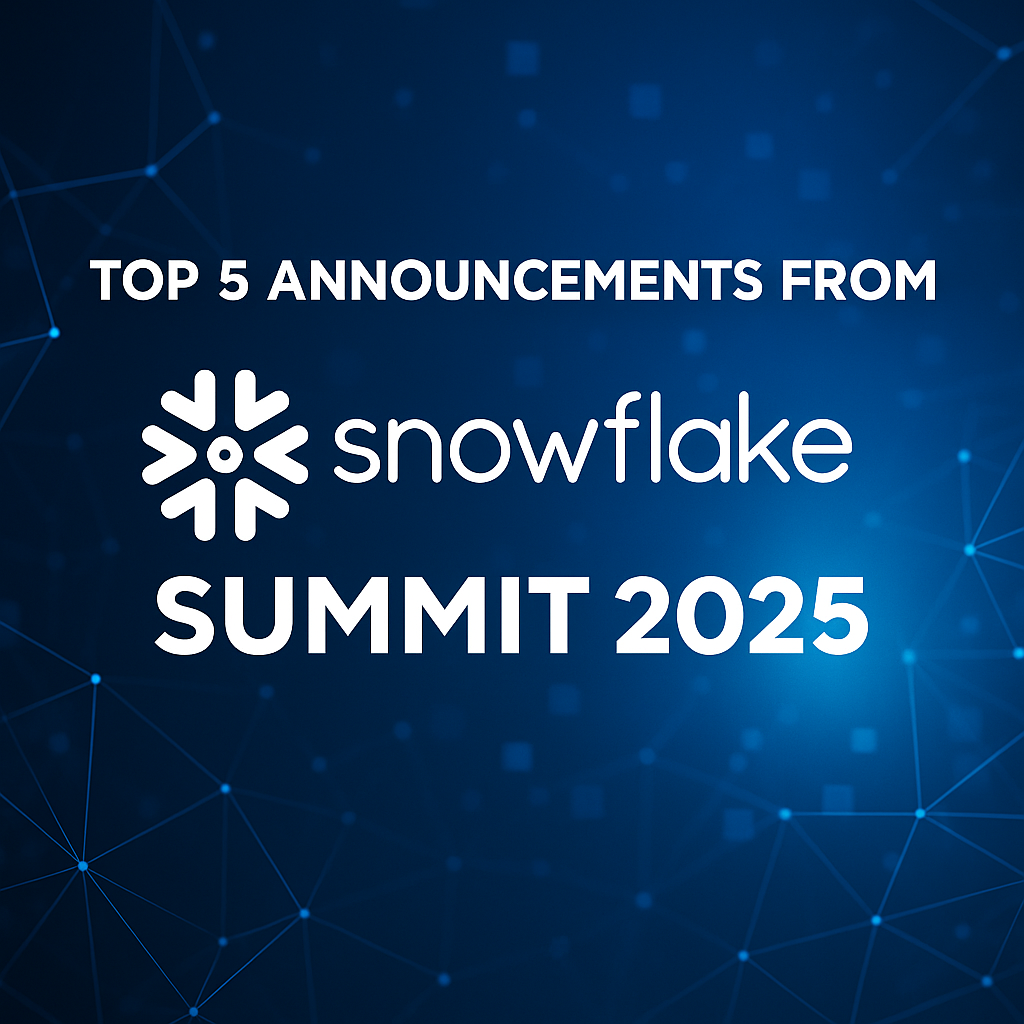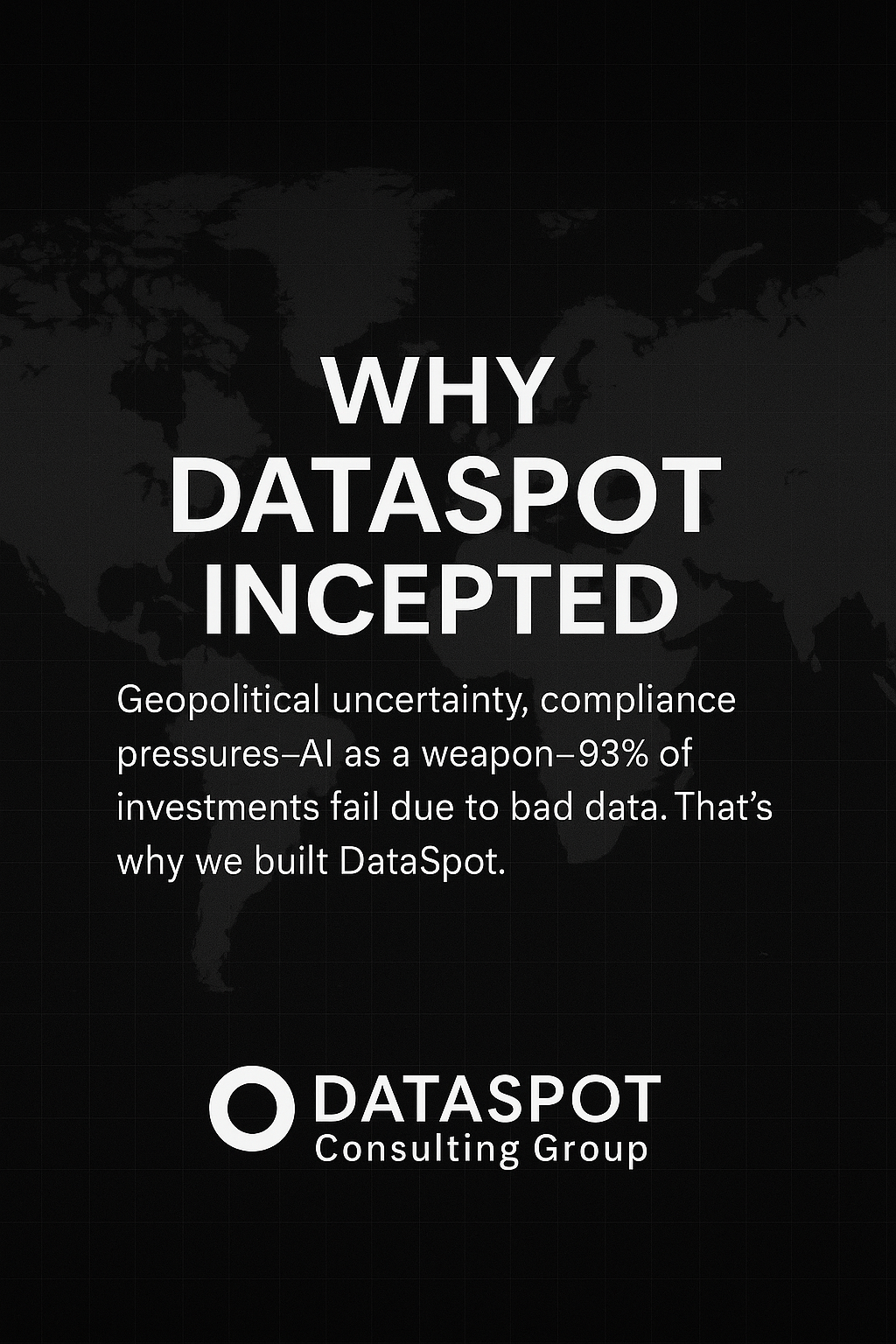Snowflake Summit 2025: Reinventing Data for the AI-Driven Enterprise
Summit Highlight:
Snowflake’s annual summit has become more than a product showcase—it’s where the future of enterprise data platforms is redrawn. This year, the 2025 edition brought bold shifts that signal a deep architectural rethinking: AI isn’t being added as a layer; it’s being embedded at the very core.
From SQL that understands language to compute that configures itself, Snowflake is crafting a data platform that anticipates the needs of an AI-powered organization. As part of the attending community, the Dataspot team distilled what matters most from the announcements—and what it could mean for enterprises poised to modernize.
1. Talking to Data Becomes Native
The announcement of Snowflake Intelligence stands out not just for its technical leap, but its cultural one. Users can now engage with data in natural language—no SQL required—thanks to built-in language interfaces supported by Snowflake’s orchestration framework, Cortex Agents.
This isn’t an AI add-on. It’s an AI-native querying experience, capable of interpreting enterprise data contexts and enforcing governance policies in real-time. Early demos showed intelligence agents not only analyzing KPIs but understanding anomalies and suggesting follow-ups—all governed by existing access policies.
For large enterprises, this bridges a critical divide: non-technical users gain insight without introducing shadow tools or bypassing security.
Learn more from Snowflake’s official announcement
2. AI Logic, Embedded in SQL
With Cortex AISQL, Snowflake brings foundational AI tasks—classification, summarization, ranking—into the SQL layer. Analysts and data engineers can now operate on unstructured inputs like PDFs, images, or audio without leaving the warehouse or learning new tooling.
This is a massive gain for enterprises with document-heavy workflows or large-scale support ticket systems. Business teams can run NLP at scale, directly within structured environments, no ETL hops or external model endpoints required.
AISQL is more than a feature—it’s a signpost that the language of analytics is evolving.

3. Compute, Without Configuration
One of the less headline-grabbing, but deeply impactful announcements was Adaptive Compute. It removes the last vestiges of manual cluster tuning: sizing, concurrency management, and workload routing now respond dynamically to usage.
This shift addresses a common operational bottleneck in data teams—overprovisioning or micromanaging compute settings. Combined with the upgraded Generation 2 Warehouses, Snowflake promises more throughput, reduced cost per query, and no-code migration from existing configurations.
It’s a quiet revolution: performance gains without human intervention.
4. Real-Time, Multi-Format Data Ingestion Simplified
Snowflake OpenFlow is the company’s most pragmatic play for modernizing the ingestion layer. Built on Apache NiFi, OpenFlow handles batch, stream, and unstructured inputs in a single workflow—designed specifically for the multimodal needs of AI workloads.
For enterprises managing hybrid architectures, this reduces the number of moving parts. Deployment is flexible (VPC or fully-managed), throughput is robust (10GB/s), and governance is integrated—not bolted on.
What makes OpenFlow stand out isn’t just technical—it’s strategic: a frictionless path to operationalize AI pipelines.
5. Snowflake Marketplace Becomes the AI Platform Layer
The evolution of the Snowflake Marketplace reveals a larger intent: to become the distribution layer for AI-native applications. New support for agentic apps—self-directed software entities operating within customer environments—opens the door to operational agents that run directly in the Snowflake environment.
These agents can now blend Snowflake’s internal data with external streams (via Cortex Knowledge Extensions), delivering context-aware reasoning from sources like AP, Stack Overflow, or internal CRM logs.
The marketplace is no longer just about data assets. It’s a canvas for intelligent operations.
Final Reflections from Dataspot
What we saw at Snowflake Summit 2025 wasn’t a stack upgrade. It was a platform shift—AI being integrated not as a capability, but as an assumption.
At Dataspot, we work with enterprises to modernize how they manage data, apply intelligence, and drive transformation. These announcements validate a direction we’ve already embraced: that agility, not just storage or scale, defines the next generation of data platforms.
If your enterprise is evaluating how Snowflake’s AI-native direction impacts architecture, governance, or data ops—we’re here to translate hype into action.
📩 Speak with our team or explore relevant case studies to see what modernization could look like for you.
Related Reads from Dataspot
- Snowflake Administrator Responsibilities 2025
- Metabase vs ThoughtSpot for Snowflake
- Should You Hire or Outsource Snowflake Admins?
📡 Stay Connected
For more enterprise insights, technical walkthroughs, and product trends:
- Follow us on LinkedIn
- Join the conversation on X (formerly Twitter)
- Read thought pieces on Medium








Leave a comment